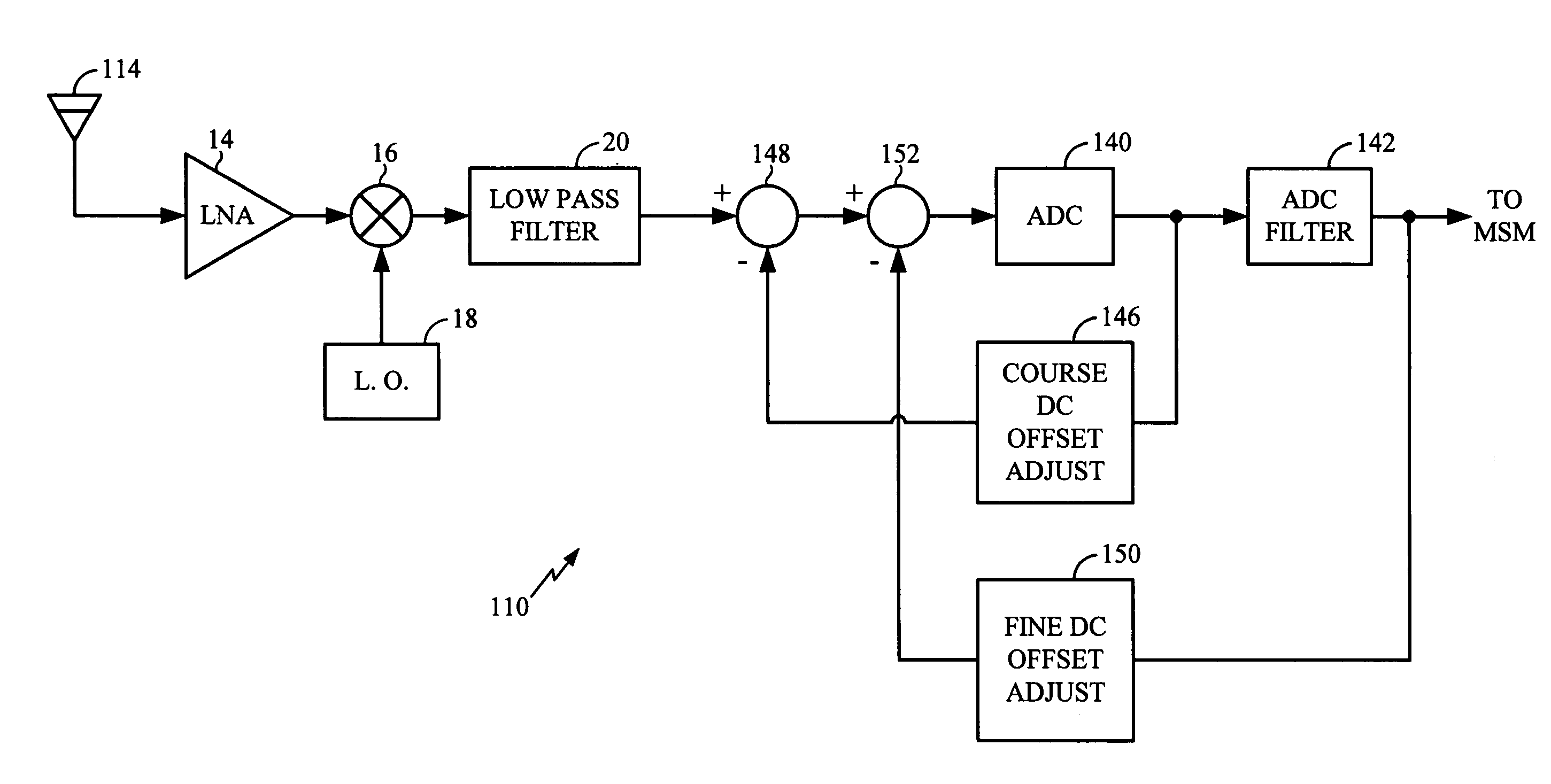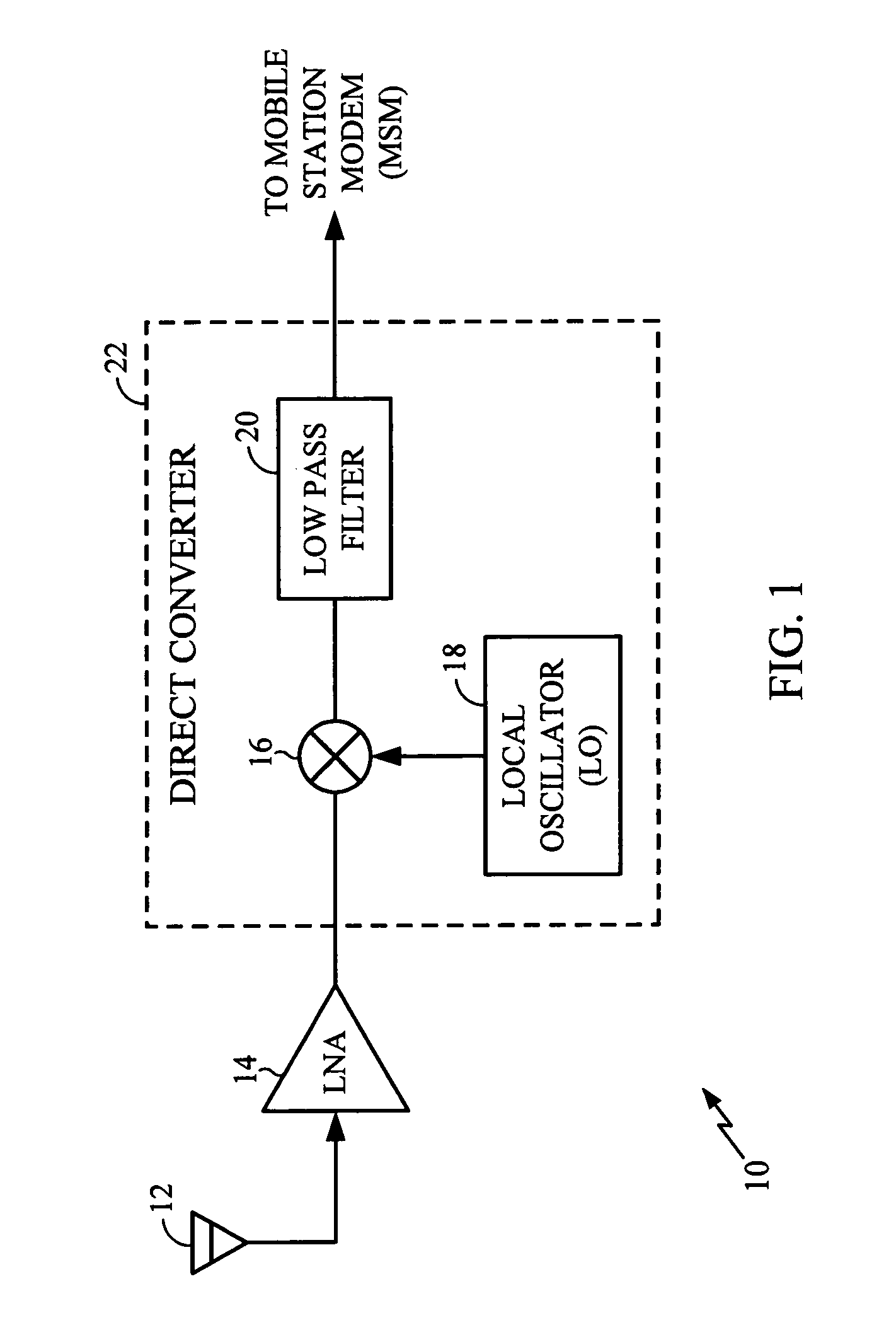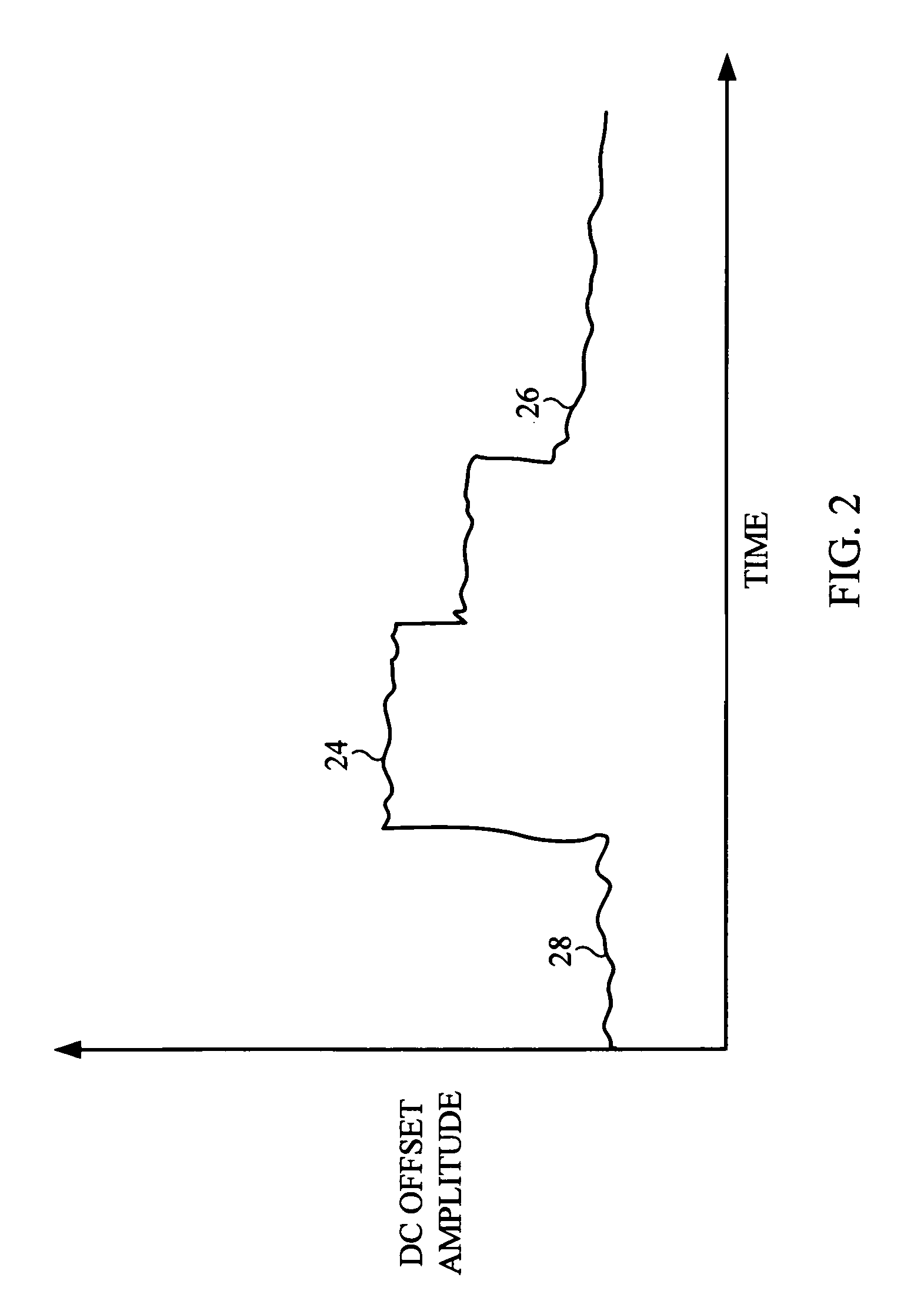Apparatus and method for DC offset compensation in a direct conversion receiver
a direct conversion and receiver technology, applied in the field of telecommunications, can solve the problems of reducing the useful communication time of a battery-operated device, consuming additional electrical power, and not without potential design problems
- Summary
- Abstract
- Description
- Claims
- Application Information
AI Technical Summary
Benefits of technology
Problems solved by technology
Method used
Image
Examples
Embodiment Construction
[0018]As previously discussed, direct current (DC) offsets a serious problem in a direct-to-baseband receiver architecture. The DC offset may be fixed or time-varying. The waveform of FIG. 2 illustrates the DC offset problems that may be encountered by a direct-to-baseband receiver. A portion 22 of the waveform is essentially a fixed DC offset amplitude that includes some small time-varying component. A typical receiver includes a variable gain amplifier (not shown), which has a gain control input to alter the gain in a step-wise fashion. A portion 24 of the waveform in FIG. 2 illustrates the abrupt change in DC offset amplitude that results from a sudden change in the gain setting of the variable gain amplifier. Finally, a portion 26 of the waveform in FIG. 2 illustrates a slowly changing DC offset amplitude.
[0019]The amplitude of the DC offset may be related to the gain setting within the receiver. The abrupt change in DC offset results from gain changes in the variable-gain ampli...
PUM
 Login to View More
Login to View More Abstract
Description
Claims
Application Information
 Login to View More
Login to View More - R&D
- Intellectual Property
- Life Sciences
- Materials
- Tech Scout
- Unparalleled Data Quality
- Higher Quality Content
- 60% Fewer Hallucinations
Browse by: Latest US Patents, China's latest patents, Technical Efficacy Thesaurus, Application Domain, Technology Topic, Popular Technical Reports.
© 2025 PatSnap. All rights reserved.Legal|Privacy policy|Modern Slavery Act Transparency Statement|Sitemap|About US| Contact US: help@patsnap.com



